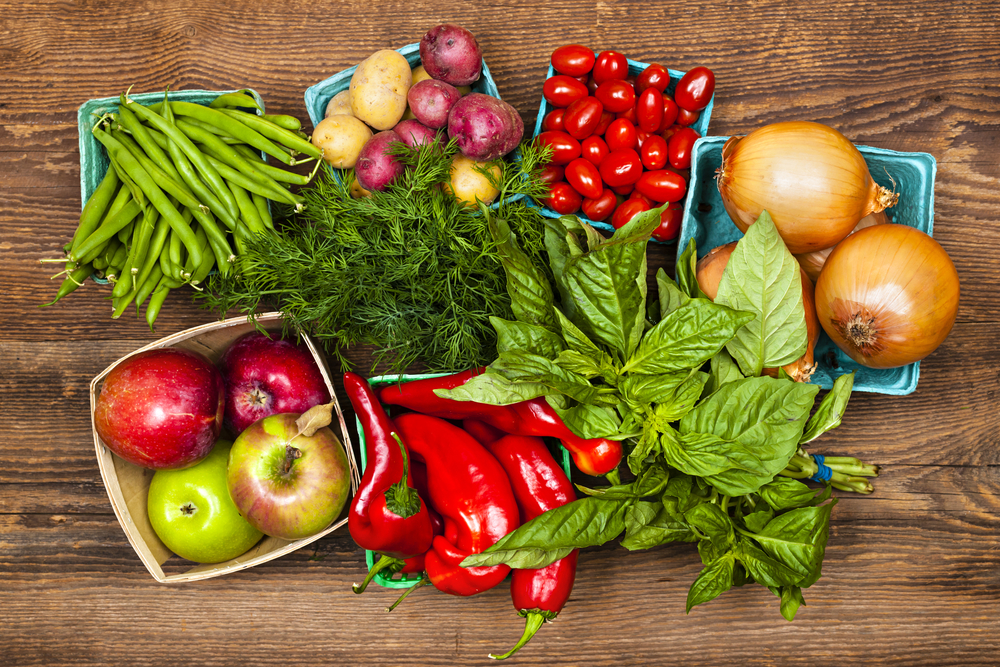Menus for seniors must have plenty of fruits and veggies, because most older adults don’t consume enough. According to a recent study, fewer than half of senior adults eat the recommended five servings of fruits and vegetables every day.
Eating the right amount of these nutrient-rich foods promotes a longer lifespan and reduces the risks of chronic disease, cognitive decline and functional impairments. To boost the produce quotient of your senior menus, try these simple tips.

Serve Fruit or Veggies at Breakfast
Start the day right by serving fruit- or veggie-packed breakfast options.
Fruit and yogurt parfaits are healthy and delicious. Or, use chopped apples, bananas or berries as a topping for pancakes or waffles.
For a savory veggie breakfast, fold diced green peppers and onions into scrambled eggs. You can also serve up spinach omelets or a low-fat potato hash.
For another easy, produce-filled breakfast, make smoothies with seasonal fruits and vegetables.
Get Creative with Substitutions
Fruits and veggies are incredibly versatile, so think outside the box to increase the produce in your facility’s senior menus.
Mashed cauliflower can substitute for pizza crust, for example, and zucchini noodles are a tasty option for any pasta dish. Unsweetened applesauce or fruit puree can also be substituted the oil or fat in baked recipes, like muffins, quick breads and cookies.
Boost the Veggies in Soups, Stews and Sauces
Menus for seniors often include a range of soups and stews, because they’re filling and comforting. Pasta with sauce is another popular favorite. Many of these dishes already have veggies but you can always add more.
Simmer finely chopped mushrooms and peppers in your tomato sauce, for instance, or thicken soups with a puree of root vegetables. For stews, increase the veggie-to-meat ratio by adding more carrots, potatoes and onions.
Make Meals Colorful
Try to add more color to every plate. By tweaking your senior recipes in this manner, you’ll naturally reach for more fruits and vegetables.
Menus for seniors should aim to serve a rainbow of produce over the course of the day. Providing a range of colorful choices is a great way to help meet the dietary needs of older adults.
Offer Healthy Fruit Desserts
Older adults love sweets and, for many, meals simply aren’t complete without dessert. Instead of serving heavy, fat-laden or sugary treats, offer healthy fruit desserts.
Fruity frozen desserts, like sorbets and ice creams, feel indulgent. But they can also be nutritious with the right recipes. Baked apples, poached pears and fruit salad with a dollop of fresh whipped cream also make for tasty treats. Or, simply serve up sliced fruit with a dark chocolate or honey yogurt dipping sauce.
For more help adding fruits and veggies to your senior menus, check out the Grove Menus system. Our simple, cost-effective meal planning program, with hundreds of dietitian-approved recipes, makes developing nutritious menus for seniors much easier, faster and more cost-effective. For a complimentary demonstration, contact us today.
